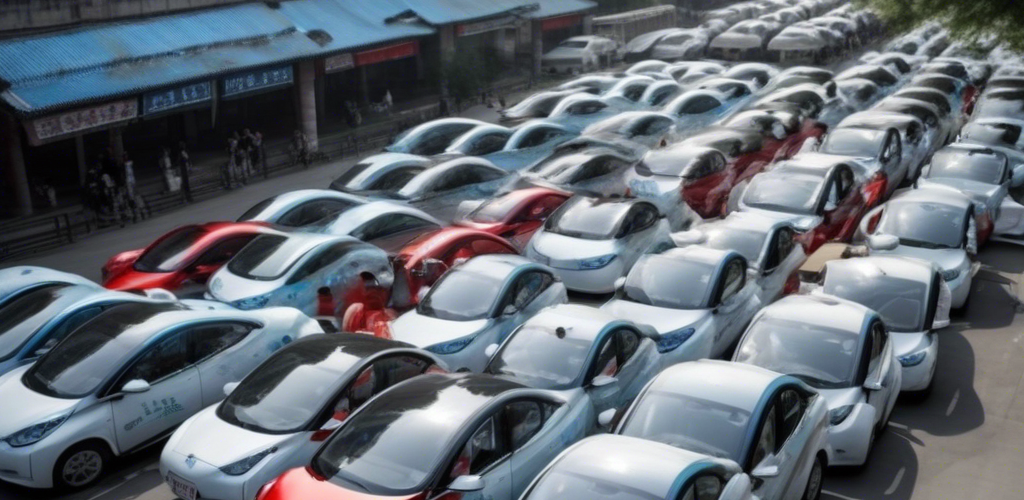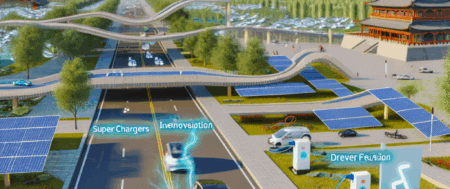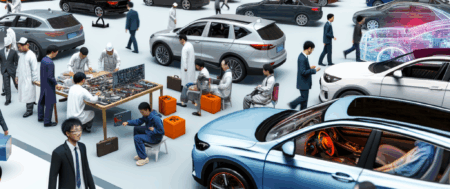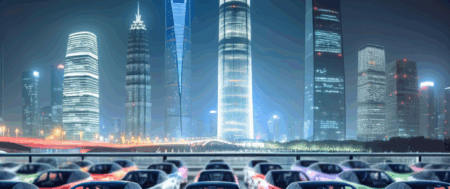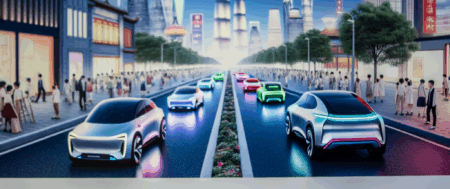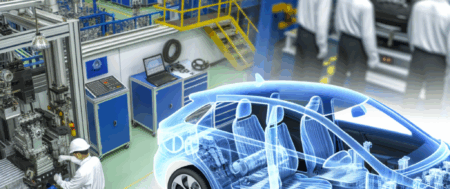China, the world’s top Largest Automotive Market, is a competitive arena where foreign automakers and domestic car brands battle for supremacy amidst an evolving landscape shaped by growing economy, urbanization, and environmental concerns. The shift towards Electric Vehicles (EVs) and New Energy Vehicles (NEVs), encouraged by government incentives, is pivotal. Success in this market demands a nuanced understanding of the regulatory landscape, often navigated through Joint Ventures that blend international expertise with local insights. This approach is essential for aligning with consumer preferences that favor sustainable vehicles. Moreover, anticipating technological advancements and leveraging strategic partnerships are key to staying ahead in the market competition. The Chinese government’s push for green vehicles amplifies the need for innovation and adaptation, making the mastery of regulatory challenges, consumer needs, and the importance of strong strategic partnerships crucial for thriving in this dynamic sector.
In an era where the quest for sustainability intersects with technological innovation, the China automotive market stands as the largest automotive market in the world, a testament to the country’s growing economy, rapid urbanization, and the evolving preferences of its burgeoning middle class. As the epicenter of both production and sales, China’s automotive landscape is a complex arena of market competition, where domestic car brands vie for dominance alongside foreign automakers through strategic partnerships and joint ventures. This dynamic market is heavily influenced by a regulatory landscape that favors electric vehicles (EVs) and new energy vehicles (NEVs), driven by government incentives and mounting environmental concerns.
Navigating this terrain requires a keen understanding of consumer preferences, the strategic importance of joint ventures, and the role of technological advancements. The surge of EVs and NEVs highlights China’s commitment to steering the future of mobility towards a greener horizon, reshaping the global automotive industry. Foreign automakers looking to tap into this lucrative market must grapple with China’s complex regulatory landscape, finding success through innovation, adaptation, and strategic partnerships with local entities.
With urbanization fueling the engine of growth and government policies shaping the roadmap to success, the China automotive market offers a unique glimpse into the future of transportation. From the competitive dynamics of market leaders to the strategic moves of new entrants, understanding this market’s intricacies is crucial for any player aiming to make a mark in the world’s top automotive sector. This article delves deep into the factors that make China’s automotive market a battlefield of innovation, environmental stewardship, and strategic maneuvering, offering insights into how companies can navigate the challenges and opportunities in the world’s largest automotive playground.
1. **Navigating the Terrain: How Foreign Automakers and Domestic Giants Compete in the World’s Largest Automotive Market**

In the heart of the world’s top automotive battleground, foreign automakers and domestic giants engage in a relentless competition to dominate the Largest Automotive Market. China’s status as the premier arena for automotive sales and production can be attributed to a confluence of factors including a rapidly growing economy, an expanding middle class, accelerating urbanization, and intensifying environmental concerns. These dynamics have created a fertile ground for both Electric Vehicles (EVs) and New Energy Vehicles (NEVs), further fueled by substantial government incentives.
The race among car manufacturers in this vast market is not just about who has the most innovative technology or the sleekest designs. Success in China’s automotive sector demands a deep understanding of the complex regulatory landscape. Foreign automakers often enter into Joint Ventures with local Chinese companies, a strategic move that offers a compass to navigate through the intricate network of regulations and tap into the extensive consumer base. This approach enables foreign brands to align with Domestic Car Brands, combining international expertise with local market insights.
Consumer Preferences in China are evolving, with a noticeable tilt towards EVs and NEVs, driven by a mixture of environmental consciousness and attractive government incentives. This shift is reshaping the market, compelling both foreign and domestic players to accelerate their technological advancements and invest heavily in sustainable vehicle solutions. The competition is not only about capturing the market’s current demand but also about anticipating future trends and consumer needs.
The competitive landscape is further intensified by the strategic partnerships formed between international giants and Chinese powerhouses. These collaborations are critical in leveraging local market knowledge, sharing technology, and co-creating vehicles that cater to the unique tastes and preferences of Chinese consumers. The synergy from these partnerships often results in cutting-edge innovations and tailored models that appeal to both the local and global market.
Moreover, the Chinese government plays a pivotal role in steering the industry’s direction through policy-making and incentives. Its commitment to reducing pollution and promoting green vehicles has set a course for the automotive sector that heavily favors EVs and NEVs. This policy environment, alongside the burgeoning urbanization and growing economy, continues to open doors for both domestic and foreign players willing to adapt and innovate.
In conclusion, the competition within China’s automotive market reflects a larger narrative of adaptation, collaboration, and innovation. As the largest automotive market globally, China offers unparalleled opportunities for both domestic car brands and foreign automakers. However, thriving in this dynamic and competitive landscape requires a strategic approach that encompasses understanding of regulatory challenges, consumer preferences, technological advancements, and the importance of forging strategic partnerships. The future of the automotive industry in China is bright, promising, and undoubtedly electric.
In conclusion, the journey through the vibrant and expansive terrain of the world’s largest automotive market reveals a landscape teeming with opportunities and challenges. China’s growing economy, the surge in urbanization, and the evolving environmental concerns have collectively paved the way for a major shift towards Electric Vehicles (EVs) and New Energy Vehicles (NEVs). These changes, underpinned by strong government incentives, have not only propelled domestic car brands to innovate but have also attracted foreign automakers to this dynamic market. The strategic partnerships formed through joint ventures stand as a testament to the collaborative effort required to navigate the complex regulatory landscape and tap into the vast consumer base that China offers.
The competition in the Chinese automotive market is fierce, with both domestic giants and foreign players vying for a share of the pie in the largest automotive market in the world. This has led to a rapid pace of technological advancements, as companies strive to meet the sophisticated consumer preferences of the Chinese middle class. The emphasis on EVs and NEVs illustrates a clear direction towards sustainability, driven by both environmental concerns and policy directives.
Understanding the intricacies of market competition, the regulatory environment, and the importance of aligning with consumer preferences and environmental standards is crucial for success in China’s automotive sector. As the market continues to evolve, those who can efficiently leverage strategic partnerships, innovate in alignment with technological trends, and adapt to the shifting landscape, will find themselves well-positioned to excel in this lucrative, yet challenging environment. The future of the automotive industry in China is bright, with endless possibilities for growth and innovation, making it a key arena for the global automotive industry’s continued evolution.
